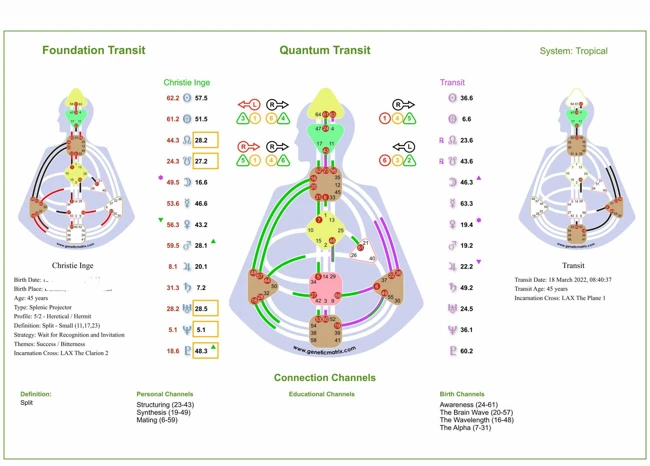Have you ever wondered about the secrets the planets hold and how they can influence our lives? Transit charts, a powerful tool in astrology, offer a captivating way to explore the impact of planetary transits. These charts provide insights into the movements of celestial bodies, mapping out their positions in relation to our birth chart. By delving into the realm of transit charts, we can uncover a wealth of knowledge about how the planetary energies interact with our own, gaining a deeper understanding of the influence these transits have on our thoughts, emotions, and life path. In this article, we will embark on a journey to unravel the mysteries of transit charts, discover their calculation methods, and delve into the profound impact of planetary transits. Get ready to unlock the secrets that the planets hold and uncover a new perspective on your cosmic journey.
What are Transit Charts?
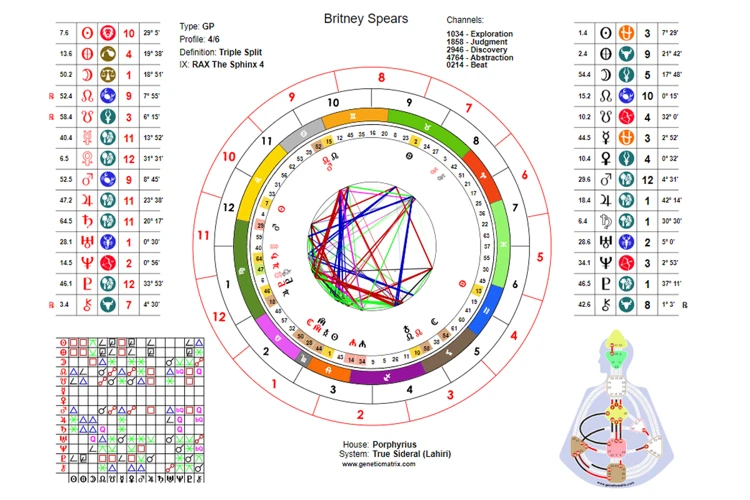
A transit chart, also known as a transit horoscope or transit forecast, is a tool used in astrology to analyze the movement and positioning of celestial bodies in relation to an individual’s birth chart. It provides insights into the current and future influences of planetary transits on various aspects of life. Transit charts are created by taking the current positions of the planets and comparing them to the positions of the planets at the time of an individual’s birth. This comparison allows astrologers to determine how the current planetary energies may be impacting different areas of a person’s life, such as career, relationships, and personal growth. By understanding transit charts, individuals can gain valuable insights and navigate the ups and downs of life with greater clarity and awareness. To learn more about how to interpret transit charts and make the most of their guidance, check out our comprehensive guide on Understanding Transit Charts.
How are Transit Charts Calculated?
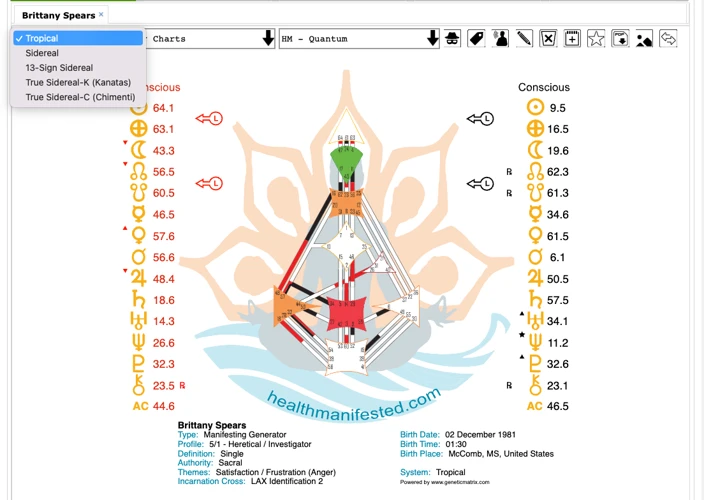
Transit charts are calculated by comparing the current positions of planets to the positions they held at the time of an individual’s birth. The process involves several steps:
1. Birth Chart Calculation: First, the individual’s birth chart is calculated, which involves determining the position of the planets at the exact time and location of their birth. This provides a snapshot of the celestial energies at the moment of their entry into the world.
2. Current Planetary Positions: Next, the astrologer determines the current positions of the planets. This can be done through various resources such as astronomical software or online tools that provide real-time planetary data.
3. Comparison and Calculation: The astrologer then compares the current positions of the planets to the positions they held at the time of birth. This calculation involves determining the degrees and signs of both the natal chart and the current planetary positions.
4. Applying Aspects: Once the degrees and signs are determined, astrologers analyze the aspects formed by these planetary positions. Aspects represent the angles between the planets and offer insights into the relationships and interactions between different energies.
The calculated transit chart provides valuable information about the current influences and potential developments in a person’s life. To gain a deeper understanding of navigating the ups and downs of life using transit charts, refer to our comprehensive guide on Transit Charts: Navigating the Ups and Downs.
The Influence of Planetary Transits

The influence of planetary transits in astrology is significant, as it sheds light on the dynamic energy and cosmic vibrations that shape our lives. Each planet possesses its own unique qualities, and when these planets make transit aspects to our natal planets, their energies interact with and influence our personal experiences. For example, the Moon represents our emotions, intuition, and habits, and its transits can bring about changes in our mood and emotional state. On the other hand, Jupiter, the planet of expansion and abundance, can bring opportunities for growth and prosperity when it transits certain areas of our chart. Understanding the specific energies and qualities associated with each planet allows us to interpret and navigate the influence of planetary transits more effectively. To demystify the complexities of planetary transits further, explore our detailed guide on Transit Charts Demystified.
The Sun
The Sun, one of the most significant celestial bodies in astrology, plays a pivotal role in transit charts. When the Sun transits a particular sign, it illuminates and energizes the corresponding area of life. Its influence brings focus, vitality, and a sense of self-awareness to the forefront. For example, when the Sun transits through Aries, it stimulates assertiveness, leadership qualities, and a desire for new beginnings. People may feel a surge of confidence and motivation during this period. On the other hand, when the Sun transits through Cancer, it emphasizes emotional connections, family matters, and nurturing qualities. This period may provide opportunities for deepening bonds with loved ones and focusing on matters related to home and security. Understanding the Sun’s transits allows individuals to harness its energy and align it with their goals and aspirations, embracing the potential for personal growth and self-discovery.
The Moon
The Moon, in astrology, holds immense significance in transit charts. As the fastest moving celestial body, it constantly shifts its position, influencing our emotions, instincts, and subconscious mind. When the Moon transits over specific houses or aspects certain planets in our birth chart, it can have a profound impact on our mood and behavior.
During a Moon transit, it is important to pay attention to the sign the Moon is moving through as it colors our emotional landscape. The Moon’s position in our birth chart reveals our emotional needs and how we respond to nurturing and security. When the Moon transits certain areas of our chart, it can bring forth heightened emotions, cravings, and a need for emotional connection and support.
Here are some key points to understand about the Moon in transit charts:
- Emotional Sensitivity: The Moon’s movements can intensify our emotional reactions, bringing us in touch with our deepest feelings. We may experience increased sensitivity, mood swings, and a desire for comfort and emotional connection.
- Intuition and Inner Guidance: The Moon’s transits can enhance our intuitive abilities, allowing us to have a clearer understanding of our subconscious desires and needs. It is a time to tune into our inner guidance and trust our gut instincts.
- Nurturing and Self-Care: Moon transits remind us to prioritize self-care and nurturing activities. It is a favorable time to engage in activities that bring emotional comfort and support, such as spending time with loved ones, journaling, or taking a relaxing bath.
- Fluctuating Energy: The Moon’s movement can affect our energy levels. As it waxes and wanes, we may experience fluctuations in our vitality and motivation. It is important to honor these shifts and listen to our body’s needs for rest and rejuvenation.
- Relationship Dynamics: The Moon’s transits can influence our relationships by enhancing emotional connections or bringing certain issues to the surface. It is a time to pay attention to our interactions with others and nurture healthy communication.
By understanding the significance of the Moon in transit charts, we can navigate the ebb and flow of our emotions with greater self-awareness and make conscious choices in alignment with our emotional well-being. As we explore the influence of the Moon and its transits, we gain a deeper understanding of our emotional landscape and the transformative power it holds in our lives.
Mercury
Mercury, the planet of communication and intellect, holds a significant influence in transit charts. As it journeys through the zodiac, it imparts its unique energy and characteristics to various aspects of life. When Mercury transits certain planets or points in our birth chart, it can affect our modes of thinking, communication skills, and decision-making abilities. For example, when Mercury transits the Sun, it enhances our mental clarity and self-expression. This can be a great time for brainstorming, problem-solving, and engaging in meaningful conversations. On the other hand, when Mercury transits Saturn, it may bring about a more serious and disciplined mindset, encouraging us to take a structured and practical approach to communication and decision-making. Mercury’s transits offer us the opportunity to tap into our intellectual potential and improve our communication abilities. By staying attuned to its movements, we can make the most of its positive influences and navigate any challenges that may arise.
Venus
Venus, the planet of love, beauty, and pleasure, plays a significant role in astrology and transit charts. When Venus makes its way through different zodiac signs and aspects other planets, it brings forth a range of influences on our relationships, values, and aesthetic preferences. Venus has a gentle and harmonious energy that seeks connection, affection, and balance. During its transits, this planet can enhance our romantic life, bringing opportunities for new love or deepening existing relationships. It also governs our sense of beauty and personal style, influencing our tastes and desires.
In transit charts, the placement of Venus can indicate the areas of life where we may experience harmony and enjoyment. For example, if Venus is transiting through our second house, it may bring financial abundance, luxurious possessions, or opportunities to indulge in pleasurable experiences. On the other hand, challenging aspects from Venus may bring challenges in relationships, leading to conflicts or issues related to self-worth and self-love.
It’s important to note that the effects of Venus transits can vary depending on the individual’s natal chart, as well as the other planets and aspects at play. Astrologers examine the specific house and aspects Venus makes to gain a deeper understanding of its influence. By studying the positioning and movement of Venus in transit charts, individuals can gain valuable insights into their love life, personal values, and aesthetic preferences. Whether seeking romance, enhancing interpersonal connections, or exploring personal style, the energy of Venus offers a beautiful and transformative journey to self-discovery and fulfillment.
Mars
Mars, the fiery and passionate planet, holds a significant influence in transit charts. As it moves through the zodiac, Mars brings forth a surge of assertiveness, drive, and determination to the areas of life it touches. When Mars forms harmonious aspects with other planets in a transit chart, it can ignite motivation, ambition, and a surge of energy to pursue goals and overcome obstacles. This can be a time of increased productivity and a heightened sense of courage and initiative. However, when Mars forms challenging aspects, it may create friction, conflict, and a sense of restlessness. It can manifest as impulsive actions, anger, and impatience. It is crucial to approach this energy with mindfulness and channel it constructively, as it can lead to breakthroughs and achievements. By understanding the influence of Mars in transit charts, individuals can harness its dynamic energy and take inspired action towards their goals and ambitions.
Jupiter
Jupiter, the largest planet in our solar system, holds great significance in astrology and has a profound influence on our lives when it comes to transit charts. Known as the planet of expansion, abundance, and growth, Jupiter brings forth opportunities, optimism, and positivity. When Jupiter transits through different houses of the birth chart, it activates specific areas of life, magnifying them and encouraging personal development. Its energy can bring about success in career endeavors, financial abundance, and personal growth. Jupiter’s influence can also promote spiritual growth, higher learning, and a deeper understanding of philosophical or moral principles. However, it’s important to note that Jupiter’s energy can be excessive at times, leading to overindulgence or a tendency to take risks without careful consideration. As Jupiter’s transit plays out in your life, it is essential to harness its energy consciously, embracing the opportunities it presents while maintaining balance and moderation. Understanding the significance of Jupiter’s influence in your transit chart can guide you towards personal growth and the pursuit of your aspirations.
Saturn
Saturn, known as the taskmaster planet in astrology, exerts a profound influence on our lives during its transits. It symbolizes discipline, responsibility, and the pursuit of long-term goals. When Saturn makes its way through different areas of our birth chart, it brings a sense of structure and emphasizes the need for hard work and perseverance. Saturn typically spends around two and a half years in each zodiac sign, urging us to confront our limitations, face challenges, and build a solid foundation for personal and professional growth. Its transits can sometimes feel restrictive or burdensome, but they also offer opportunities for personal development and maturity. During a Saturn transit, it is important to assess our strengths and weaknesses, take on responsibilities, and make necessary changes in order to achieve our desired aspirations. This planet teaches us valuable lessons about patience, discipline, and resilience, guiding us towards long-lasting success and personal fulfillment. Whether it highlights career ambitions, relationships, or personal development, the influence of Saturn’s transits invites us to embrace the lessons it brings and grow through its trials and tribulations. Understanding the impact of Saturn is vital for navigating its transformative energies and harnessing its wisdom during its transits.
Uranus
Uranus, the seventh planet from the Sun in our solar system, is often associated with innovation, change, and rebellion. Its energy is electric and unpredictable, symbolizing the need for freedom and individuality. In transit charts, the movement of Uranus can bring sudden and unexpected shifts in various areas of life. This planet breaks down traditional structures and encourages us to embrace new ways of thinking and living. It seeks to shake us out of our comfort zones and push us towards personal growth and evolution. During Uranus transits, it is common to experience moments of clarity, epiphanies, and a strong desire for independence. This energy can inspire us to break free from limiting beliefs and societal expectations, paving the way for profound personal transformations. While the influence of Uranus can be exciting and liberating, it can also be disruptive and challenging, especially if we resist the changes it brings. It is important to remain open-minded and adaptable during Uranus transits, embracing the opportunities for growth and embracing the potential for positive change.
Neptune
Neptune, the mystical and ethereal planet, holds a significant influence in transit charts. Known as the planet of dreams and illusions, Neptune’s energy can bring about profound spiritual experiences and creativity, but it can also create confusion and deception. When Neptune makes a transit to a specific planet or point in an individual’s chart, it can enhance their intuition, sensitivity, and imagination. However, it can also blur boundaries and lead to escapism or delusion if one is not grounded.
Transits of Neptune often invite individuals to explore their spirituality, connect with their higher selves, and seek deeper meaning in life. This transit can inspire a desire for selfless acts, compassion, and empathy toward others. It can also heighten one’s artistic abilities, making it a favorable time for creative endeavors such as music, painting, or writing. However, it’s crucial to remain discerning during Neptune transits, as the planet’s energy can also foster illusions, deception, and a tendency to see things through rose-colored glasses. It’s essential to maintain a balance between fantasy and reality to navigate the Neptune transit effectively. By embracing the transformative and imaginative energies of Neptune, individuals can harness its power for personal growth and spiritual development. So, whether Neptune brings a euphoric wave of inspiration or a fog of uncertainty, its impact on transit charts is unquestionably profound.
Pluto
Pluto, the distant and enigmatic planet known for its transformative energies, plays a significant role in transit charts and astrology. As the ruler of the subconscious mind and the realm of deep transformation, Pluto’s transits can bring about profound changes and growth in our lives. When Pluto makes a transit to a particular planet or point in our birth chart, it symbolizes a period of intense inner work and evolution. This planet’s influence is often associated with power struggles, rebirth, and the unfolding of our deepest desires and fears. Pluto’s transits can bring about endings and beginnings, pushing us to let go of what no longer serves us and embrace personal transformation. These transits can be challenging, but they offer an opportunity for deep healing and regeneration. It is important to approach Pluto’s transits with awareness and embrace the changes they bring, as they have the potential to profoundly reshape our lives. Whether it involves breaking patterns, releasing past traumas, or embracing a new sense of personal power, Pluto’s transits invite us to embrace our inner strength and embark on powerful journeys of growth and self-transformation.
Understanding Transit Aspects

Understanding transit aspects is key to deciphering the intricate dance of planetary energies in a transit chart. Aspects refer to the angles formed between planets, which create specific energetic connections and influences. These aspects can be harmonious or challenging, amplifying or modifying the energies involved. Some common aspects include conjunctions, where planets are in close proximity, emphasizing their combined energies. Oppositions occur when planets are directly across from each other, representing a tension between their energies. Trines create a harmonious flow of energy, while squares indicate tension and potential challenges. Sextiles bring opportunities for growth and cooperation, and quincunxes represent a need for adjustment and adaptation. Understanding these various aspects allows astrologers and individuals to gain deeper insights into the specific dynamics at play during a transit.
For example, a transit involving the harmonious trine aspect between Venus and Jupiter may bring an abundance of love, luck, and expansion in relationships and finances. On the other hand, a transit with a challenging square aspect between Mars and Saturn could indicate obstacles, frustrations, and a need for perseverance.
By examining the aspects in a transit chart, individuals can gain clarity about the specific energies at play and how they may manifest in different areas of life. This understanding allows for a more nuanced interpretation and enables individuals to make informed decisions and take advantage of favorable aspects while navigating through challenging ones. It is essential to consider these transit aspects when interpreting a transit chart and understanding the complexities of the planetary interactions.
Interpreting Transit Charts
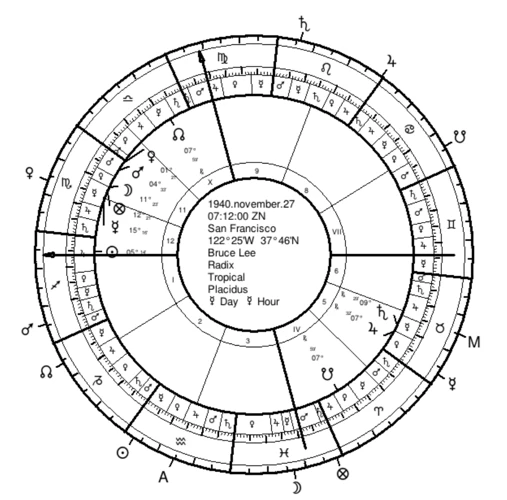
Interpreting transit charts is a fascinating process that allows us to gain deeper insights into the cosmic energies at play and how they may impact our lives. When analyzing transit charts, it’s essential to consider the aspects formed between the transiting planets and our natal planets. These aspects, such as conjunctions, squares, trines, and oppositions, reveal the nature of the interaction between the planetary energies. For example, a conjunction between transiting Venus and natal Mars may signify a period of heightened passion and romance, while a square between transiting Saturn and natal Sun could indicate a time of challenges and responsibilities. It’s important to note that the interpretation of transit charts is highly individualized, as the specific planetary placements and aspects in one’s birth chart will determine how the transits manifest in their life. By embracing the art of interpreting transit charts, we can gain valuable insights into the cosmic dance and proactively navigate life’s twists and turns.
Identifying Major Transits
Identifying major transits is a crucial step in interpreting transit charts. These transits refer to the planetary movements that have a significant impact on an individual’s life. While all transits may have some level of influence, certain transits carry more weight and are considered major. One way to identify major transits is by paying attention to the outer planets – Jupiter, Saturn, Uranus, Neptune, and Pluto. These planets have slower movement and therefore their transits tend to have longer-lasting effects. Additionally, major transits are often marked by the involvement of personal planets such as the Sun, Moon, Mercury, Venus, and Mars. These transits can bring about important themes and events related to one’s identity, emotions, communication, relationships, and actions. It’s important to study the aspects formed between the transiting planets and the natal chart as well. Challenging aspects like squares and oppositions may indicate periods of tension and growth, while harmonious aspects such as trines and sextiles can bring about opportunities and ease. By recognizing and understanding these major transits, individuals can prepare themselves for the potential impact on their lives and make informed choices to navigate through these transformative periods with greater clarity and purpose.
Considering Retrograde Planets
When interpreting transit charts, it is crucial to consider the influence of retrograde planets. Retrograde motion occurs when a planet appears to move backward in its orbit, an optical illusion caused by the varying speeds of Earth and the observed planet. In astrology, retrograde planets are believed to have a unique energy, often representing a period of introspection, reflection, and reevaluation related to the planet’s domain. For example, Mercury retrograde is well-known for causing communication and technology hiccups. During this time, it is wise to exercise caution in signing contracts, making important decisions, or launching new projects. Retrograde periods can also intensify and bring unresolved issues to the surface, providing an opportunity for deep healing and growth. Other retrograde planets such as Venus, Mars, and Saturn each have their own influence and significance. Understanding the retrograde motion of planets in transit charts adds an extra layer of nuance and insight into astrological interpretations. So when analyzing transit charts, pay attention to the status of retrograde planets and consider their unique effects on your journey.
Transit Charts in Astrology
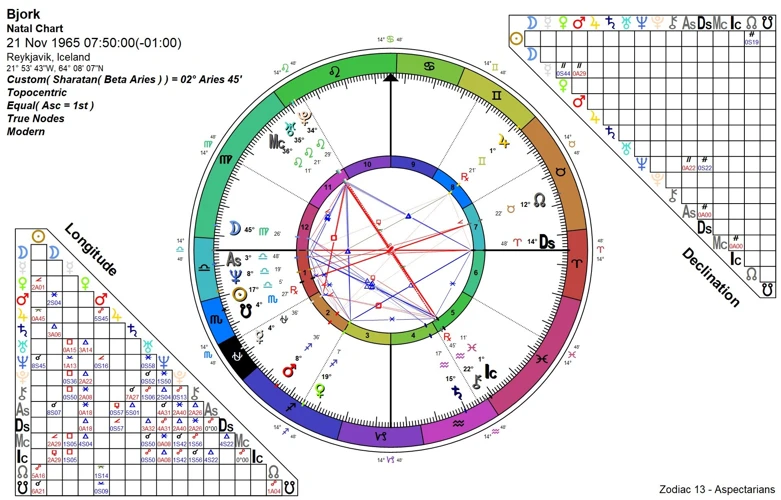
Transit charts play a crucial role in the field of astrology and are widely used by astrologers to gain insights into the energetic shifts and influences that individuals may experience at different points in time. These charts allow astrologers to analyze the planetary transits and their interactions with an individual’s natal chart, providing a deeper understanding of the potential effects on various aspects of life. Transit charts serve as a roadmap to understanding the timing of events, personal growth opportunities, and challenges that may arise. They can help individuals anticipate periods of heightened activity, emotional intensity, or significant transformations. By examining transit charts in astrology, astrologers can provide valuable guidance to individuals, allowing them to navigate life’s ups and downs with greater awareness and preparedness. These charts serve as a powerful tool for self-reflection, personal development, and making informed decisions aligned with the cosmic energies at play. Understanding the significance of transit charts in astrology opens the door to a deeper understanding of the interconnectedness between celestial bodies and human experiences.
Using Transit Charts for Personal Growth
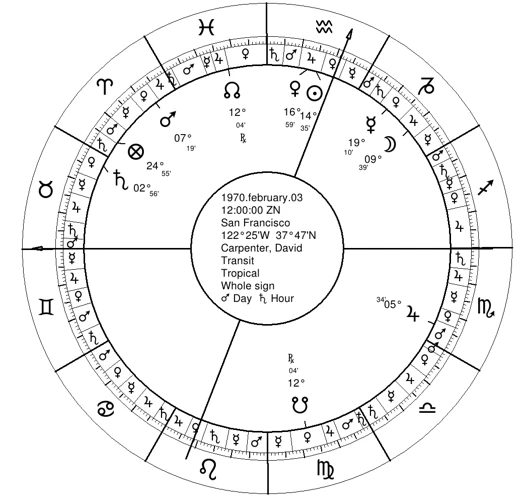
Using transit charts for personal growth is a powerful and transformative practice that allows individuals to gain deeper insights into themselves and their life journey. These charts offer a unique perspective on the current planetary influences and their impact on personal development. By studying transit charts, individuals can identify the areas of their life that are being activated by specific planetary transits. This awareness provides an opportunity for self-reflection and allows for intentional growth and healing. Transit charts can help uncover patterns, challenges, and opportunities that arise during different phases of life, offering guidance and support in navigating these transitions. Whether it’s a time for self-reflection, self-care, or taking active steps towards personal goals, using transit charts can be a valuable tool for self-discovery and personal growth. By understanding the planetary energies at play and aligning them with personal intentions, individuals can harness the transformative power of transit charts to create positive change and live a more fulfilling life. So, if you’re ready to embark on a journey of self-exploration and utilize the wisdom of the planets for personal growth, dive deeper into the world of transit charts and discover the profound impact they can have on your path to self-discovery.
Examples of Significant Transits
Examples of significant transits can provide a deeper understanding of how these celestial movements can impact our lives. Here, we will explore a few notable transits and their potential effects. One example is the transit of Saturn conjunct the natal Sun. This transit often signifies a period of increased responsibility and self-discipline, pushing individuals to take a more serious approach to their goals and ambitions. Another example is the transit of Jupiter trine natal Venus, which is associated with opportunities for growth, abundance, and enhanced relationships. This transit can bring about positive experiences in love, creativity, and financial matters. Additionally, the transit of Uranus opposing natal Mars can bring unexpected changes, disruptions, or a sudden surge of energy that prompts individuals to break free from stagnant routines and embrace their individuality. These examples demonstrate the diverse range of influences that transits can have on our lives, highlighting the importance of examining the specific aspects and planetary combinations involved. Through studying these examples, we can gain valuable insights into the potential outcomes and themes that may arise during significant transits.
Conclusion
In conclusion, transit charts offer a remarkable window into the influence of planetary transits on our lives. By understanding the movement and positioning of celestial bodies in relation to our birth chart, we can gain valuable insights into the energies at play and make informed decisions about various aspects of our lives. Whether it’s navigating relationships, career decisions, or personal growth, transit charts provide a roadmap that allows us to align our actions with the cosmic flow. Remember, the planets are constantly in motion, and their transits bring about new opportunities, challenges, and lessons. By staying attuned to the energies present in our transit charts and embracing the wisdom they provide, we can embark on a journey of self-discovery and personal growth. So, dive into the world of transit charts, explore the profound influence of planetary transits, and embark on a transformative cosmic journey. Let the planets guide you towards a richer and more fulfilling life.
Frequently Asked Questions
What information does a transit chart provide?
A transit chart provides information about the current positions of the planets and how they relate to an individual’s birth chart. It helps astrologers understand the influences and energies affecting different areas of life at any given time.
How are transit charts different from birth charts?
A birth chart is a snapshot of the planets’ positions at the time of an individual’s birth, while a transit chart shows the current positions of the planets and their interactions with the birth chart. Transit charts provide insights into how the planets are currently influencing an individual’s life.
Can transit charts predict future events?
Transit charts do not predict specific events but rather offer insights into the energies and influences present in one’s life. They can help individuals understand the opportunities, challenges, and potential shifts in different areas of life.
Are transit charts only relevant to astrology enthusiasts?
No, transit charts can be beneficial for anyone seeking to gain a deeper understanding of the planetary influences affecting their life. They offer insights that can help individuals make informed decisions, navigate challenges, and enhance personal growth.
Do transit charts indicate good or bad periods in life?
Transit charts do not determine good or bad periods definitively. Every transit carries its own unique energy, which can bring both opportunities and challenges. It is up to the individual to interpret and navigate these influences in a way that aligns with their personal journey.
How often should one consult their transit chart?
The frequency of consulting a transit chart depends on individual preferences. Some people prefer to check their transit chart periodically, like monthly or quarterly, while others may only consult it during significant life events or when seeking guidance during challenging times.
Can transit charts be used for predictive purposes?
Transit charts can provide valuable insights into potential influences and shifts in different areas of life. While they are not intended for precise predictions, they can help individuals prepare for possible scenarios and make conscious choices based on the energies indicated by the transiting planets.
Are transit charts only applicable to personal life?
No, transit charts can be used to analyze various aspects of life, including personal, professional, and relationship dynamics. They can provide insights into the energies shaping different areas and help individuals make better-informed decisions.
Can transit charts help with self-reflection and personal growth?
Absolutely! Transit charts can offer profound insights into one’s inner journey, highlighting areas of personal growth, self-reflection, and transformation. By understanding the planetary influences, individuals can align their actions and decisions with their personal and spiritual evolution.
Are professional astrologers necessary to interpret transit charts?
While professional astrologers can provide expert guidance and interpretations of transit charts, individuals can also learn to interpret their own transit charts with study and practice. There are numerous resources available, including books, online courses, and software, to aid in understanding and utilizing transit charts effectively.

